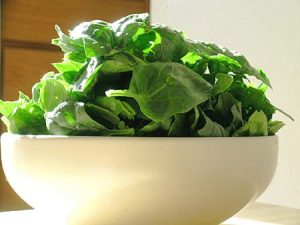FEATURED ARTICLES
- Details
- Written by Lisa Jillanza
Sure, you would be hard-pressed to find a woman or a man who says that they actually enjoy the thoughts of spring cleaning. But, if you just take into consideration how many calories are burned while you are doing your spring cleaning, then you may be a little more excited when spring rolls around this year.
 Spring cleaning exercises
Spring cleaning exercises
The actual number of calories burned will depend on your weight, gender and age, but their calculators that you can find online (FitDay or NutriStrategy) that will help you to calculate your actual calories burned.
So, dust off your mops, break out the cleaner and begin to sweat off the weight!
Editor's Note: The calories burned estimates listed here are based on one hour of cleaning for a 155-pound woman.
Gardening: 226 calories
Window washing: 226 calories
Scrubbing floors (on hands and knees): 291 calories
Laundry, ironing: 84 calories
Sewing repairs: 36 calories
Dusting: 97 calories
Scrubbing toilets, tub: 246 calories
Vacuuming: 317 calories
Cleaning gutters: 258 calories
Moving furniture, household items: 387 calories
Painting, papering, plastering: 317 calories
Sweeping: 194 calories
Mopping: 153 calories
- Details
- Written by Lisa Jillanza
- The vitamin K in spinach provides 200% of the daily value in fresh spinach and nearly 1000% of the daily value in boiled spinach.
- Spinach is an excellent source of vitamin C and vitamin A, folate and magnesium.
- Cooked spinach is a great source of iron and is totally fat free.
 Spinach health benefits
Spinach health benefits
Recipe: Wilted Spinach Salad
- 10 to 12 ounces spinach, washed and torn into pieces
- ¼ cup minced red onion
- 5 to 6 radishes, thinly sliced
- 2 hard-cooked eggs, 1 chopped and 1 sliced
- 2 to 4 slices bacon
- 1 to 1 ½ tablespoons bacon drippings
- 1 ½ tablespoons sugar
- 3 tablespoons vinegar
- 1 tablespoon water
- ½ teaspoon salt
- 1/8 teaspoon pepper
Place prepared spinach in a large bowl. Add onions and radishes. Refrigerate, tightly covered. Fry or microwave bacon until crisp; remove to paper towel and set aside. In a small jar or measuring cup combine drippings with sugar, vinegar, water, salt and pepper. Refrigerate all ingredients until just before serving. When ready to serve, microwave the dressing on high for 30 to 45 seconds, or until mixture boils. Toss the chopped egg with the greens then pour the hot dressing over greens mixture; toss again lightly. Top with sliced egg and crumbled bacon.
Recipe: Spinach Lasagna
- 2 egg whites
- 26 oz of prepared spaghetti sauce
- 24 oz of ricotta cheese
- 10 oz of Lasagna noodles, cooked
- 10 oz of frozen spinach, thawed and chopped, then squeezed dry
- 2 cups of mozzarella cheese, grated, reserve ½ cup
- ¾ cup of Parmesan cheese, grated and divided, reserve 2 tablespoons
- ½ teaspoon of salt
- ½ teaspoon of black pepper
- Olive oil
Preheat oven to 350°. Prepare a 9x13 dish.Cook lasagna noodles as directed on the package, then rinse and drain. Combine parmesan cheese, ricotta cheeses with the egg whites, salt and pepper in a large mixing bowl. Pour ¼ cup of spaghetti sauce in the bottom of the baking dish and spread it out using a spatula. Cover the sauce with a single layer of lasagna noodles. Spread about half the cheese mixture over the noodles, and then cover with about half of the spinach and shredded mozzarella cheese. Finish this layer with half of the remaining spaghetti sauce. Add a second layer of noodles, topping with the remaining cheese mixture, spinach, and mozzarella cheese. Top with the final layer of noodles and remaining spaghetti sauce. Sprinkle the reserved Parmesan cheese over the top and bake for 30 minutes. Remove from oven and set for 10-12 minutes.
- Details
- Written by Lisa Jillanza
As the ice and snow start to melt and the mercury starts to rise again, everyone starts to think about getting back in shape for the spring and summer seasons. Instead of hitting the exercise hard, many experts suggest easing back into your springtime routine
 Spring health tips
Spring health tips
Start Slow. Take the time you need to jump start your spring diet and exercise plan. By easing into your regimen, you will be more successful in keeping with your diet and exercise plan.
Plan a New Menu. You need to really look at your diet and the number of calories you are consuming daily. Choose foods that are low in calories but are filling to help you fight off the hunger throughout the day.
Get outdoors. Now that the weather is breaking, mix up your exercise routine and enjoy the weather outdoors. Walk, hike, bike, run , enjoy yourself and the beautiful season.
- Details
- Written by Lisa Jillanza
The American Diabetes Association estimates that around 10 percent of the general population and 25 percent of senior citizens suffer from type 2, or adult onset diabetes.
Diabetes when left unchecked can lead to heart disease, kidney disease, skin conditions, and even blindness. However, type 2 diabetes like any lifestyle disease is highly preventable.
The sooner you make this healthy lifestyle changes, the better your chances of lowering your risk for developing this disease. To keep your blood sugar levels healthy, below are some simple tips to keep type 2 diabetes at bay.
 Control blood sugar levels
Control blood sugar levels
Avoid or limit your sugary food or beverages intake. One of the most obvious culprits in raising your blood sugar levels. Replace those sugary drinks/ sodas with fruit juices or even better, water.
Shed some pounds. Every extra pound count, and the sooner you could keep your weight within your recommended levels, the better your chances of lowering your risk for diabetes.
Lower stress levels. Sound mind, sound body. Finding time to relax after a stressful day at work by performing simple exercises or just take some “me” time can lower stress levels.
Keep hydrated. Drinking water is never overrated. With water making up more than three-fourths of our body, keeping our body hydrated is essential. Dehydration causes our body to release stress hormones which in turn raises our blood sugar levels.
Eat less and more frequently. Keep your blood sugar levels within healthy levels by avoiding sudden peaks. Spreading your meals throughout the day means a steady stream of sugar.
- Details
- Written by Lisa Jillanza
According to a recent study done by the American Heart Association, one in three adults suffer from hypertension or high blood pressure. While many people are prescribed medication to help reduce their blood pressure, nutritionists say that simply by eating your fruits and vegetables that you can help reduce your blood pressure naturally.
Fruits and vegetables are chock full of great vitamins and nutrients that will help to lower your blood pressure and combined with medication and exercise you will be back on the healthy track. Physicians recommend 4 to 5 servings of vegetables per day and 2 to 3 servings of fruit per day. The following are some great blood pressure lowering options:
 Lower blood pressure with fruits and veggies
Lower blood pressure with fruits and veggies
Vegetables: swiss chard, broccoli, cabbage, cauliflower, spinach and lettuce.
Fruits: citrus fruits, bananas, and apples.
While all fruits and vegetables are good for you, the above contain the appropriate amounts of the right vitamins and nutrients that when added to your regular diet will equal out to a heart-supportive diet.
By simply making some small changes to your everyday eating and making sure to get the appropriate number of foods and vegetables in your daily diet, you will see your blood pressure numbers gradually decreasing.

